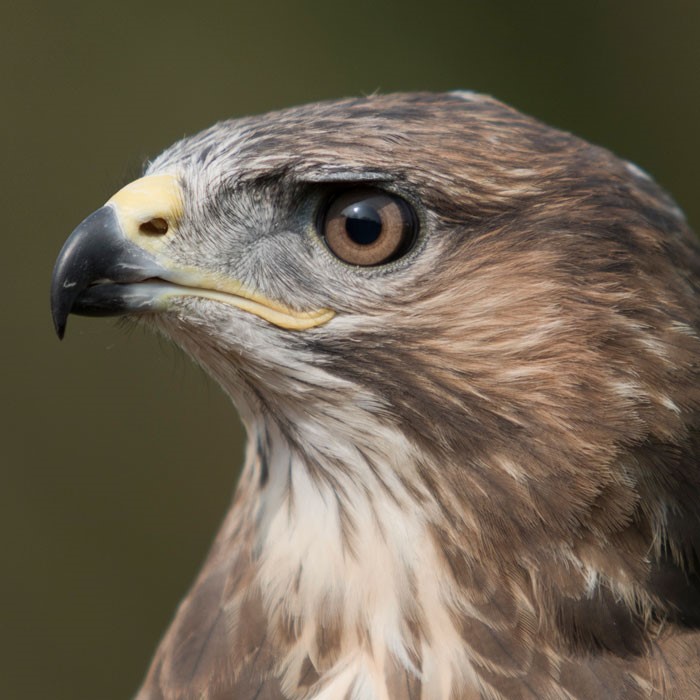
Common Buzzards
Busby & Bella & Amber
Buzzards are iconic in Wales and here at the centre we have three. Bella and Busby are a lovely couple, we are hoping they will raise their own family this year. and we will have some baby buzzards to fly in our shows and on our experience days.
Amber joined us in 2022 after she was found in someone's Garden and no one came to claim her. She's now settled in well, has got new feathers and is learning to soar like her wild friends.
Click below to Sponsor "Flint"
Click below to Sponsor "Busby & Bella"
COMMON BUZZARD FACTS
Buteo buteo
TERRITORY/LOCATION
Common Buzzards cover most of Europe and extends into Asia. Over much of its range, it is resident year-round, but birds from the colder parts of the northern hemisphere typically migrate south (some well into the southern hemisphere) for the northern winter.
HABITAT
Open countryside with small areas of woodland or the edges of more densely wooded areas. With decreased persecution, they are often being found closer to populated areas, where they can scavenge waste.
CONSERVATION STATUS
Least Concern

DIET
Hunts over open land, a great opportunist, it adapts well to a varied diet of pheasant, rabbit, other small mammals to medium mammals, reptiles, amphibians, invertebrates & young birds and can often be seen walking over recently ploughed fields looking for worms and insects, though they will take, carrion often leading to them being accused of killing such things as new born lambs.
SIZE/WEIGHT
40 and 58 cm in length with a 109–136 cm wingspan and weighs 427–1,364 g females being larger than the males
NESTING
The common buzzard breeds in woodlands, usually on the fringes, Buzzard pairs mate for life.
Breeding starts between March and May laying 2-4eggs.
LIFE EXPECTANCY
12-20 years old average age in the wild
28 years oldest recorded in the wild
30 years in captivity
SCIENTIFIC
CLASSIFICATION
KINGDOM
Animalia
PHYLUM
Chordata
CLASS
Aves
ORDER
Accipitriformes
FAMILY
Accipitridae
GENUS
Buteo
SPECIES
B.buteo
DID YOU KNOW?
There are now around 40,000 breeding pairs in UK, still mainly on the western side of the country though occurring throughout Wales & Scotland. The main threat to Common Buzzards in this country is still illegal killing, both by shooting & poisoning.
